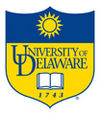Main Page: Difference between revisions
From phys824
Jump to navigationJump to search
No edit summary |
No edit summary |
||
| Line 14: | Line 14: | ||
*[[Syllabus | Syllabus]] | *[[Syllabus | Syllabus]] | ||
*[[Lectures|Lectures]] | *[[Lectures|Lectures]] | ||
*[[Computer Lab|Computer Lab]] | |||
*[[Homework|Homework]] | *[[Homework|Homework]] | ||
*[[Research Projects|Research Projects]] | *[[Research Projects|Research Projects]] | ||
*[[References|References]] | *[[References|References]] | ||
|}<!-- End Portals --> | |}<!-- End Portals --> | ||
Revision as of 08:49, 20 September 2012
|
| Instructor · UD Physics & Astronomy · Teaching Web | Help · WikiLaTeX · Categories · Media · A–Z index |
|
|
ACKNOWLEDGMENT: Portion of the course material is based upon work supported by the National Science Foundation under Grants No. ECCS 0725566 and ECCS 1202069. Any opinions, findings, and conclusions or recommendations expressed in this material are those of the author and do not necessarily reflect the views of the National Science Foundation.
Wiki Getting Started
Consult User's Guide for information on using the wiki software.

